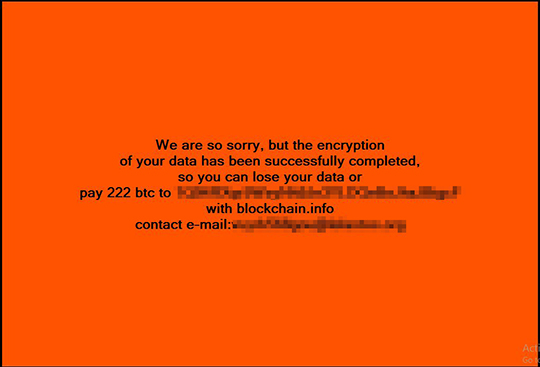RANSOM_KILLDISK.A
Trojan:Win32/Dynamer!ac (Microsoft), TR/KillDisk.jvego (Avira)
Windows


Threat Type: Trojan
Destructiveness: No
Encrypted: No
In the wild: Yes
OVERVIEW
This Trojan arrives on a system as a file dropped by other malware or as a file downloaded unknowingly by users when visiting malicious sites.
TECHNICAL DETAILS
Arrival Details
This Trojan arrives on a system as a file dropped by other malware or as a file downloaded unknowingly by users when visiting malicious sites.
Other Details
This Trojan encrypts files with the following extensions:
- .vmdk
- .vhd
- .vmem
- .vdi
- .vhdx
- .vmx
- .ovf
- .vmc
- .vmfx
- .vmxf
- .hdd
- .vbox
- .vcb
- .vmsd
- .vfd
- .pvi
- .hdd
- .bin
- .avhd
- .vsv
- .ost
- .pst
- .mkv
- .pem
- .jrs
- .cer
- .pvk
- .pfx
- .pd
- .pio
- .csr
- .crl
- .p7c
- .piz
- .p7b
- .spc
- .p7r
- .io
- .pyc
- .dwg
- .max
- .dxf
- .3ds
- .ai
- .conf
- .my
- .ost
- .pst
- .mkv
- .mp3
- .wav
- .oda
- .sh
- .py
- .ps
- .ps1
- .php
- .aspx
- .asp
- .rb
- .js
- .git
- .mdf
- .djvu
- .doc
- .docx
- .xls
- .xlsx
- .jar
- .ppt
- .pptx
- .rtf
- .vsd
- .vsdx
- .jpeg
- .jpg
- .png
- .tiff
- .msi
- .zip
- .rar
- .7z
- .tar
- .gz
- .eml
- .ml
- .vbm
- .vbk
- .dat
- .crt
- .key
- .kdbx
- .bak
- .back
- .dr
- .bkf
- .cfg
- .fdb
- .mdb
- .accdb
- .gdb
- .wdb
- .csv
- .sdf
- .myd
- .dbf
- .sql
- .edb
- .mdf
- .ib
- .db3
- .db4
- .accdc
- .mdbx
- .sl3
- .sqlite3
- .nsn
- .dbc
- .dbx
- .sdb
- .ibz
- .sqlite
NOTES:
This ransomware locks the screen with the following ransom note after it encrypts the all the files:

It also clears the Windows Event Logs using wevutil.exe with the following parameters:
SOLUTION
Step 1
Before doing any scans, Windows XP, Windows Vista, and Windows 7 users must disable System Restore to allow full scanning of their computers.
Step 2
Restart in Safe Mode
Step 3
Restore encrypted files from backup.
Step 4
Scan your computer with your Trend Micro product to delete files detected as RANSOM_KILLDISK.A. If the detected files have already been cleaned, deleted, or quarantined by your Trend Micro product, no further step is required. You may opt to simply delete the quarantined files. Please check this Knowledge Base page for more information.
Did this description help? Tell us how we did.

